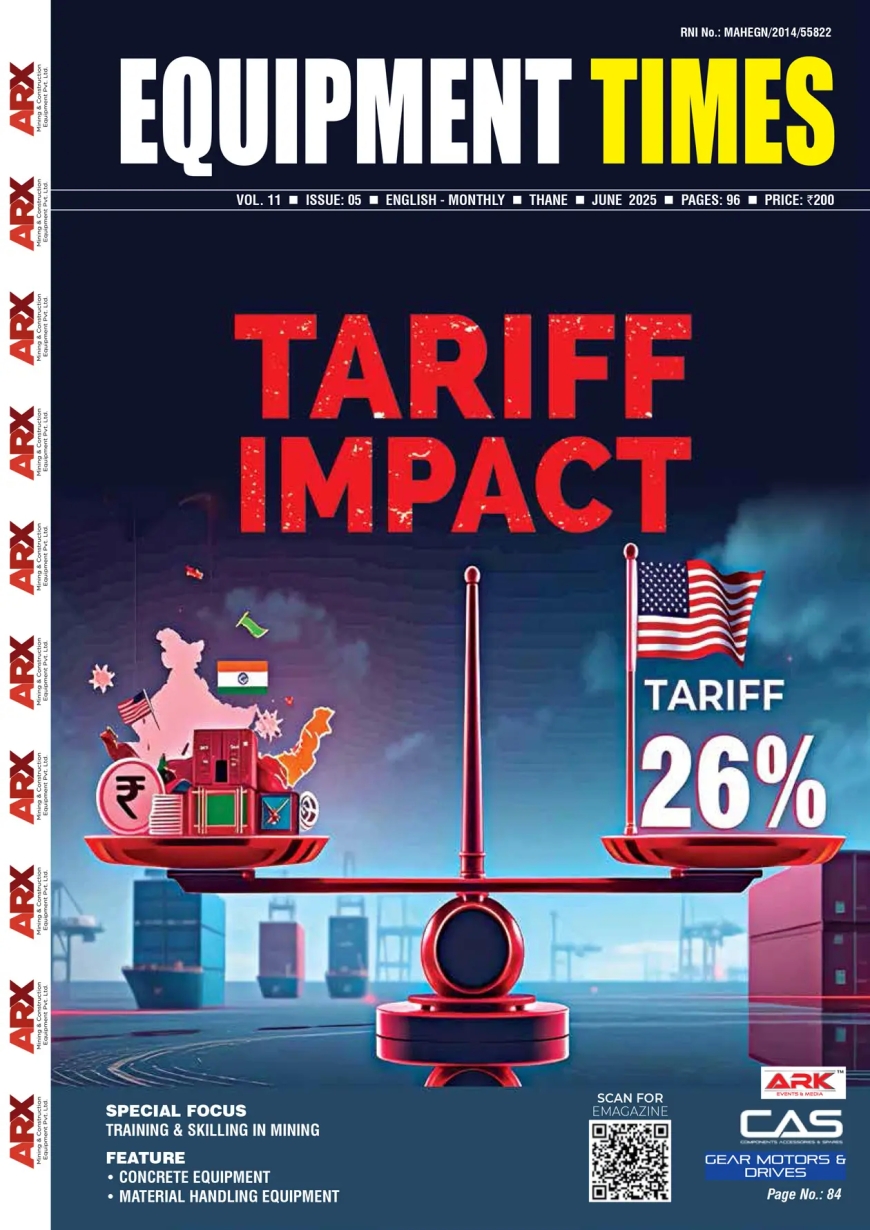Doubling our growth within the next 4-5 years stands as a key objective.
Anand Sundaresan, Managing Director, Ammann India. Industry is seeing a growth in last 10 12 years. How do you see the growth of the industry as well as Ammann in next 5-10 years? In the current business landscape, projecting

Industry is seeing a growth in last 10 – 12 years. How do you see the growth of the industry as well as Ammann in next 5-10 years?
In the current business landscape, projecting trends over 5 to 10 years is challenging due to the cyclic nature of industries. Numerous factors come into play, as witnessed during the global economic downturn in 2009, which affected us, albeit less severely compared to other nations. It’s evident that India isn’t detached from global events; we’re intricately connected.
While our internal aspirations drive our company’s growth, it’s prudent to focus on a shorter timeframe. The growth trajectory and dreams are internal, yet externally, we acknowledge the certainty of the Indian industry’s growth. This growth significantly hinges on government investments, especially in infrastructure. Presently, signs indicate positive industry growth, particularly with anticipated pre-2024 election investments.
Discussions among colleagues echo this sentiment, hoping for stability or even growth post-election. Contractual awards will persist, providing a foundation. Post-election, regardless of the government, a settling-in period of 2-3 months is foreseeable before a significant upturn.
Continued governance by the same administration ensures a promising growth trajectory, paving the way for substantial progress over the following 4-5 years.
Shifting focus to Ammann, our aspirations are ambitious. Doubling our growth within the next 4-5 years stands as a key objective. Our approach emphasizes organic growth rather than inorganic expansion, aiming to enhance existing products and services. We hold dominant market shares in certain products, exceeding 60%, while in others, there’s ample room for growth. Efforts are concentrated on bolstering market share in these sectors.
Our recent exhibition showcased new products, strategically designed to bridge gaps within our product portfolio.
With the push for infrastructure on construction projects, how are you trying to manage the scalability compared to the demand you are getting?
To the best of our understanding, our comfort stems from our lack of reliance on outsourced fabrication. Admittedly, we do depend on external components for certain equipment; however, beyond that, our independence from external sources remains steadfast. Our comprehensive facilities for fabrication and production afford us autonomy. Presently, we boast surplus capacity. Our concerns are minimal for the next 5-10 years, especially regarding existing products; any worries are mitigated unless we introduce a new product to the equation.
What are your challenges that you feel are still in the industry?
One of the significant challenges we face is the rapid growth within the industry, leading to a loss of personnel due to the plethora of job opportunities it generates. Retaining talent becomes a monumental task, particularly in Gujarat, where the allure of major hubs like Pune, Mumbai, and Bangalore draws away a substantial portion of skilled individuals. To address this, we’re exploring the possibility of establishing satellite offices in these areas to centralize certain staff-related functions.
Another pressing issue is the inconsistency in certain component import costs. The absence of government regulations or mandates results in significant fluctuations, impacting our operations directly. Even when we procure hydraulic components from local entities like Wipro, their imports influence the cost due to the fluctuations in their input costs. This volatility has a substantial effect on our operations. These challenges remain pertinent to our current landscape.
Tell us something about women empowerment in your company?
In the realm of women’s empowerment, Ammann’s presence in India reflects a notable weakness in our engagement of female employees. Currently, we do not stand as a significant employer of women, although we possess substantial resources and personnel. Contrastingly, companies like JCB or Tata Hitachi have made strides in this area, boasting a considerable number of women working across their shop floors. One contributing factor to this disparity is geographical variance; regions like Gujarat exhibit lower participation of women in the workforce. Encouraging women, especially in lower-tier positions, to join the workforce, particularly in workshops and similar settings, poses challenges. However, with time, this landscape may evolve, potentially leading to a greater influx of women into these roles. Regrettably, our current contribution to gender diversity remains markedly low, an aspect we aim to improve upon in the future.
You have been former Chairman for IESC. How do you look at the training and skilling initiatives in the industry?
It all began with Glen D’Silva. Then, I took over as the chairman, followed by Sandeep Singh and Arvind Garg. Dimitrov Krishnan is also involved. Together, we’ve been advocating to the government for mandating the use of certified operators specifically trained for construction equipment. We stress that operating this machinery requires distinct skills beyond mere driving—skills crucial for safety, performance, and various operational aspects affecting costs. Despite our persistent efforts in engaging with the government to enforce this measure, unfortunately, it hasn’t materialized yet.
What is the message you want to give to entire construction equipment industry?
Embrace a grand vision and take action. For international corporations, advocate for your parent companies to encourage their component suppliers to establish their presence in India. This strategic move will facilitate the development of an ecosystem conducive to manufacturing equipment at a reduced cost within India. Such an initiative promises benefits not only for the domestic market but also enhances our global competitiveness in export markets.
Hits: 17








